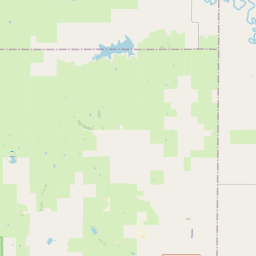Civil War Memorial
Historical marker location:





April 12, 1861: The Civil War begins with the Confederate attack on Fort Sumter, located in South Carolina's Charleston Harbor.
April 15, 1861: President Abraham Lincoln issues a call for 75,000 volunteers to serve in the Union Army to suppress the rebellion.
May 24, 1861: The first major land battle, known as the First Battle of Bull Run (or First Battle of Manassas), takes place in Virginia. It ends in Confederate victory.
September 17, 1862: The Battle of Antietam in Maryland becomes the bloodiest single-day battle in American history, with heavy casualties on both sides. The Union forces, commanded by General George McClellan, manage to halt Confederate General Robert E. Lee's advance into Union territory.
January 1, 1863: President Lincoln issues the Emancipation Proclamation, declaring that all slaves in Confederate-held territories are to be set free. However, the proclamation does not immediately free all slaves in the United States.
July 1-3, 1863: The Battle of Gettysburg in Pennsylvania takes place, resulting in a significant Union victory and inflicting heavy casualties on Confederate forces. It marks a turning point in the war.
November 19, 1863: President Lincoln delivers the Gettysburg Address, emphasizing the principles of liberty, equality, and the preservation of the Union.
April 9, 1865: General Robert E. Lee surrenders to Union General Ulysses S. Grant at Appomattox Court House in Virginia, effectively ending the Civil War.
April 14, 1865: President Lincoln is assassinated by John Wilkes Booth while attending a play at Ford's Theatre in Washington, D.C.
May 10, 1865: Confederate President Jefferson Davis is captured, signaling the collapse of the Confederate government.
December 6, 1865: The Thirteenth Amendment to the United States Constitution is ratified, officially abolishing slavery throughout the country.
While this timeline provides an overview of key events, it is important to note that the Civil War spanned over four years, from 1861 to 1865, and encompassed numerous battles, campaigns, and political developments that shaped the course of American history.
Amelia Earhart, the famous aviator, was born in Atchison, Kansas in 1897.
The establishment of Lyon County can be traced back to the mid-1800s when pioneers began to settle in the area. The discovery of gold in neighboring Colorado attracted many prospectors, leading to the establishment of the Santa Fe Trail, which passed through present-day Lyon County. These trailblazers saw the fertile land and abundant water sources of the county, making it an ideal location for agricultural pursuits.
Lyon County officially came into existence in 1855, named after General Nathaniel Lyon, a Union officer who died in the Civil War. As more settlers arrived, the county experienced rapid growth in both population and infrastructure. The town of Emporia, now the county seat, was established in 1857 and quickly became a center of trade and commerce in the region.
In the late 19th century, Lyon County experienced significant economic development, as railroads extended their lines into the area. This allowed for the efficient transportation of agricultural and industrial goods, leading to further growth and prosperity. Today, Lyon County continues to thrive as a vibrant community, offering a mix of small-town charm and modern amenities for its residents and visitors.
Lyon County Timeline
This timeline provides a concise overview of the key events in the history of Lyon County, Kansas.
- 1855 - Lyon County was established as one of the original 33 counties of Kansas Territory.
- 1860 - Lyon County became an official Kansas county when the state was admitted to the Union.
- 1863 - The county seat was established in Emporia, which remains the county seat to this day.
- 1865 - The first railroad line was completed in Lyon County, connecting Emporia to Topeka.
- 1870 - The town of Reading was founded in the southern part of Lyon County.
- 1873 - The Kansas State Teachers College (now Emporia State University) was established in Emporia.
- 1880s - Agriculture, particularly wheat farming, became a major industry in Lyon County.
- 1902 - The Lyon County Courthouse, a historic building, was completed in Emporia.
- 1930s - Lyon County was severely affected by the Great Depression, with many farmers struggling to make a living.
- 1960s - Lyon County saw population growth and economic development thanks to industries such as oil and gas production.
- 2007 - The Public Building Commission of Lyon County was formed to oversee the construction of a new county jail.